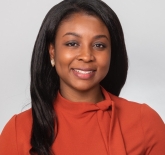Empowering Educators: Creating a Safe and Inclusive Classroom to teach GBV Prevention in Sexual Health Education

Did you know?
- In Canada, approximately 1 in 3 adolescents experience dating violence (Exner-Cortens et al, 2023)
- More than 50% of 2SLGBTQ+ youth in schools experience being discriminated against due to their sexual orientation or gender identity (Wright et al, 2022).
Addressing gender-based violence (GBV) prevention through comprehensive sexual health education is critical for the sexual health and well-being of young people.
Navigating topics about GBV with students may feel challenging for some educators, but we can use our Physical and Health Education (PHE) classrooms as a cornerstone to teach about GBV prevention sexual health education topics. To do this, it is important for PHE educators to create a safe and inclusive classroom environment where all students feel respected, supported, and empowered to engage in discussions about GBV and sexual health.
The Sex Information and Education Council of Canada (SIECCAN) offers evidence-based resources to integrate GBV prevention within sexual health education. Referencing our "Educator Guide: Gender-Based Violence Prevention within School-Based Comprehensive Sexual Health Education", this article provides PHE educators with information and practical guidance on how to support students and teach about GBV prevention sexual health education topics.
Setting the Foundation: Establishing a Safe Learning Environment
When teaching about GBV prevention sexual health education topics, it is critical to create a safe and supportive learning environment. Educators can take several steps to ensure that classroom discussions are informed, respectful, and inclusive. Here's how you can lay the groundwork:
- Collaborative Ground Rules:
- Involve your students in setting clear ground rules that promote respect, empathy, and open communication. Examples of ground rules include: showing respect to all classmates, using inclusive language, and keeping personal peer disclosures confidential.
- Prepare to support students on sensitive topics by identifying available resources and support services and have these accessible in your classroom (i.e. on a bulletin board, in handouts, or on your classroom website).
- Cultivate Mutual Respect:
- Emphasize the importance of respecting diverse perspectives and experiences.
- Encourage students to listen actively and engage in constructive dialogue while acknowledging and validating each other's viewpoints.
- Acknowledge and validate students' emotions and provide strategies for managing discomfort.
- Encourage respectful discussions using structured guidelines and wellness breaks when needed.
- Facilitate inclusive activities such as icebreakers, group projects, peer interviews, and cultural sharing to help students get to know each other.
- Address Power Dynamics:
- Be mindful of power dynamics within the classroom and strive to create an environment where all students feel equally valued and respected.
- Gender-Inclusive Language:
- Language plays a significant role in creating an inclusive classroom environment.
- Use gender-neutral pronouns such as "they/them” and refrain from using gendered labels when referring to individuals or relationships (i.e., instead of saying "boys/girls," one could use "individuals" to be more inclusive.)
- Use terms like "partner" or "significant other" instead of assuming a specific gender in relationship discussions.
- Avoid assumptions about gender identity and use terms like "sex assigned at birth" instead of "biological sex" to acknowledge diversity.
- Create a classroom environment where all students feel seen and respected by discussing anatomy and reproductive health using inclusive language that acknowledges diverse bodies and experiences (e.g., using terms such as "people with vulvas" and "people with penises; saying “some bodies have a uterus and ovaries, and some don’t. Most bodies that have a uterus and ovaries can become pregnant”).
- Cultural Sensitivity:
- Recognize and respect the diversity of cultural backgrounds within your classroom.
- Use inclusive language (e.g., use phrases like "all relationships", “partners” or “family/caregivers/community”).
- Instead of assuming a universal experience, acknowledge that different communities may have unique perspectives on, and experiences with, GBV.
- Provide opportunities for students to share their perspectives by engaging in activities to understand your students' backgrounds, interests, and learning styles. For instance, have them fill out questionnaires about their favorite hobbies or cultural traditions.

Navigating Sensitive Discussions: Creating a Safe Space for Dialogue
Discussing topics related to GBV prevention and sexual health requires sensitivity and empathy. Here's how you can create a safe space for meaningful dialogue:
- Educate Yourself:
- Examine your own assumptions and biases.
- Deepen your understanding of GBV prevention sexual health education topics (e.g., consent, gender stereotypes, communication) through ongoing education and professional development.
- Familiarize yourself with relevant resources, statistics, and best practices to guide your teaching approach, such as the "Gender-Based Violence Prevention within School-Based Comprehensive Sexual Health Education Educator Guide”, Guidelines for Integrating Gender-Based Violence Prevention within School-Based Comprehensive Sexual Health Education and the Benchmarks for Integrating Gender-Based Violence Prevention within Sexual Health Education.
- Establish Trust:
- Build trust with your students by demonstrating empathy and understanding.
- Let students know that their voices are heard and create opportunities for open dialogue where they feel comfortable sharing their thoughts.
- Provide Support:
- Recognize that discussions about GBV may evoke strong emotions, especially for students who have experienced trauma. Offer resources and support services, both within the school community and beyond, to ensure that students have access to the help they need.
- Check out SIECCAN’s Guidelines for Integrating Gender-Based Violence Prevention within School-Based Comprehensive Sexual Health Education and a Guide to Trauma-Informed Sex Education by CARDEA Services for more information about trauma-informed teaching approaches.

Creating a safe and inclusive classroom environment for GBV prevention requires intentional effort, empathy, and ongoing commitment from educators. By establishing ground rules, fostering open communication, and using inclusive language, teachers can create a supportive space where students feel valued and empowered to engage in discussions related to GBV prevention and sexual health.
If you need further guidance and resources on GBV prevention within comprehensive sexual health education, check out SIECCAN’s resources:
- "Gender-Based Violence Prevention within School-Based Comprehensive Sexual Health Education: An Educator's Guide"
- “Sexual Health Education Gender-Based Violence Prevention Portal”. The Portal is an extensive online repository, that provides educators with access to diverse tools and resources to support GBV prevention efforts in schools (e.g., consent and boundaries, healthy relationships).
- Guidelines for Integrating Gender-Based Violence Prevention within School-Based Comprehensive Sexual Health Education
- Benchmarks for Integrating Gender-Based Violence Prevention within Sexual Health Education
See https://www.sieccan.org/gbv or all resources.
References
Exner-Cortens, D , Baker, E , & Craig, W (2023) Canadian adolescents’ experiences of dating violence: Associations with social power imbalances Journal of interpersonal violence, 38(1- 2), 1762-1786
Wright, J , Zidenberg, A M , Fraser, L , Peter, T , Jakubiec, B , & Cameron, L (2022) Speak out: Addressing 2SLGBTQ youth dating violence. Egale Canada









